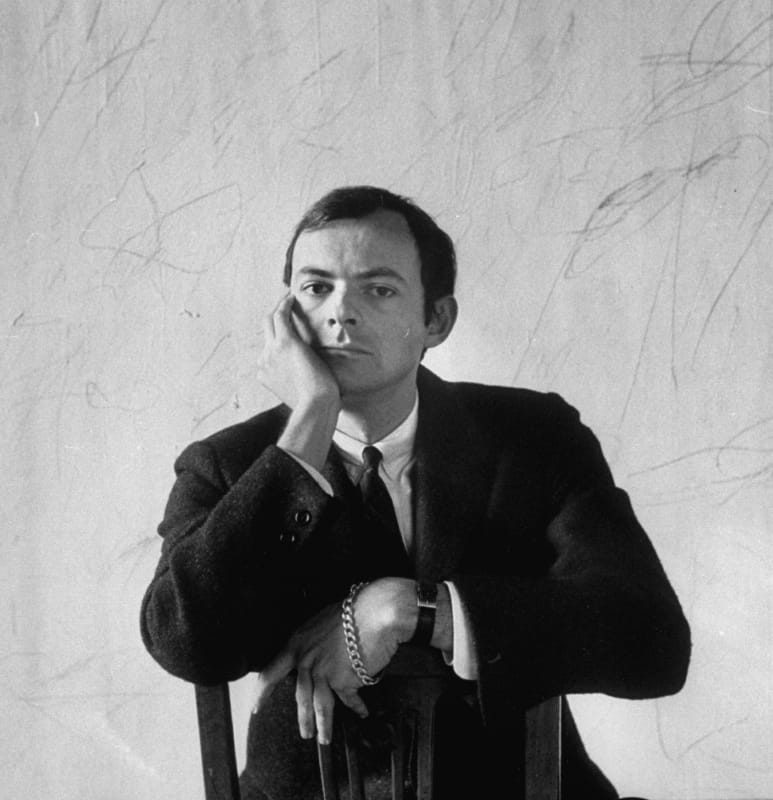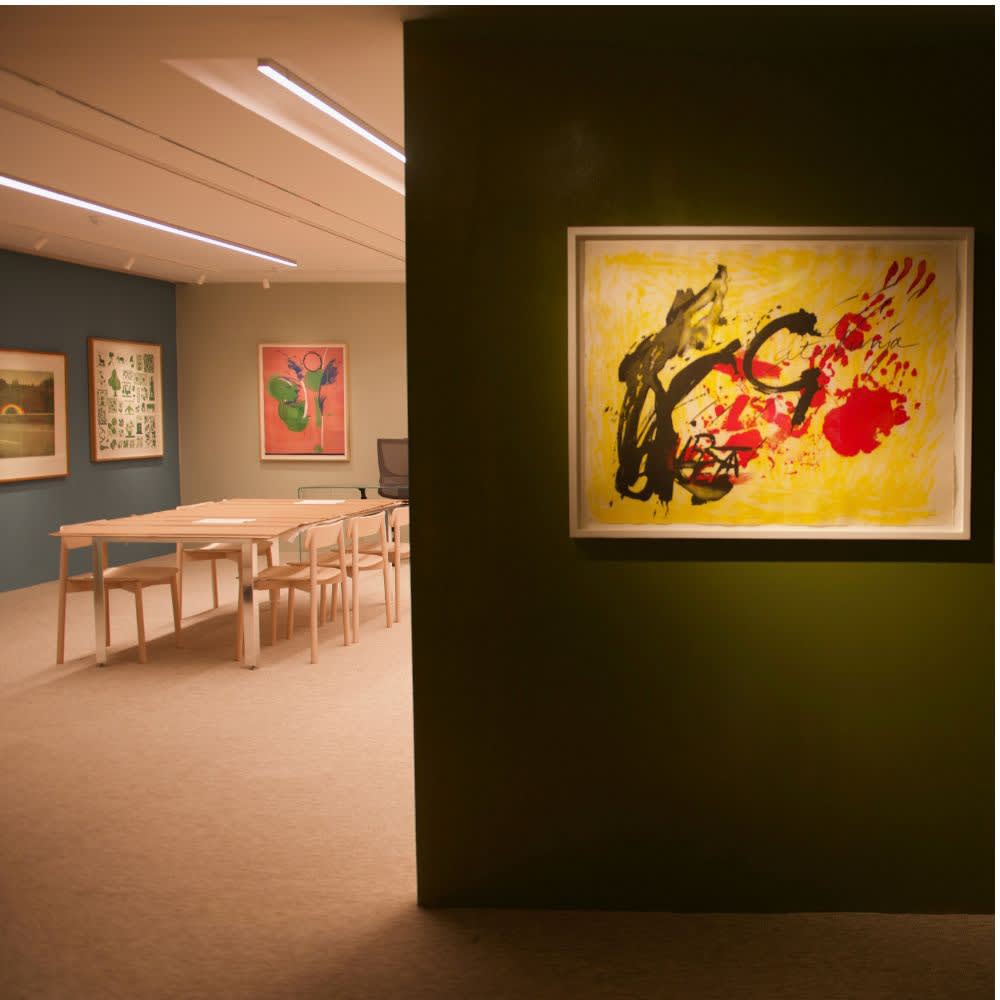Cy Twombly
Cy Twombly (1928–2011) was an American artist known for his large-scale, freely scribbled, calligraphic-style paintings and drawings. His work, blending elements of graffiti and abstract expressionism, conveys deep emotional and historical narratives through seemingly spontaneous marks and gestures. Twombly's prints, like his paintings, exhibit a lyrical and poetic quality, often incorporating texts and references to classical antiquity. His distinctive style, merging the primitive and the sophisticated, has made his work highly influential and sought after in the art world.
Explore signed prints by Cy Twombly available for sale at our gallery now.
Send me more information on Cy Twombly
Cy Twombly (1928 – 2011). Edwin Parker “Cy” Twombly was born April 25, 1928 in Lexington, Virginia. Twombly begun to take private art lessons at age 12 with the famed Catalan painter Pierre Daura. Twombly graduated from Lexington High School in 1946, going on to attend Darlington School in Rome, Georgia. Twombly studied at the School of the Museum of Fine Arts, Boston (1948 – 1949) and at Washington and Lee University (1949 – 1950) in Lexington Virginia. From 1950 – 1951, Twombly studied at the Art Students League of New York and at Black Mountain College near Ashevillle, North Carolina.
Twombly held his first solo exhibition at the Samuel M. Kootz Gallery in New York in 1951. In 1952, Twombly received a grant from the Virginia Museum of Fine Arts. Twombly married Italian Artist Tatiana Franchetti in 1959, and the couple moved to Rome. Twombly’s later move to Gaeta in Southern Italy inspired him to paint classical myth, producing a cycle of works based on the gods Zeus and Jupiter, including Leda and the Swan and The Birth of Venus. Twombly’s 1964 exhibition at the Leo Castelli Gallery in New York showcased some of his classically inspired work alongside his Discourses on Commodus (1963).
Between 1967-1971, Twombly developed his well-known “blackboard paintings.” This work laid the foundation for his later sculptures, which reflect his interest in the sophisticated intellectualism associated with classical myth. From 1976, Twombly produced sculptures suggestive of Classical forms, exhibiting a large number of them at Kunstmuseum Basel in 2000. The Classical World remained a rich vein of inspiration that Twombly tapped into throughout his career, working on the monumental historical ensemble Fifty Days at Illiam in 1978, a ten-part cycle inspired by Homer’s Illiad.
Twombly’s work situates classical reference within the context of modern technique and multimedia, a style that earned him huge success, in particular for his Gaeta Canvases and the 1994 Four Seasons. Twombly exhibited at the Whitney Museum of American Art in 1979, curated by David Whitney in a retrospective exhibition, at the Musée National d’Art Moderne, Paris in 1988, and the Museum of Modern Art, New York in 1994.
In 2011, Twombly’s work went on display as part of Twombly and Poussin: Arcadian Painters at the Dulwich Picture Gallery. The exhibition begun less than a week before Twombly’s death, in conjunction with a second exhibition at the gallery entitled Cy Twombly: The Natural World, Selected Works 2000 – 2007.
Twombly is collected internationally by a hoard of institutions. In 1989, the Philadelphia Museum of Art opened permanent rooms dedicated to his monumental 10-painting cycle Fifty Days at Illiam. The Cy Twombly Pavilion of the Menil Collection, Houston houses more than thirty of Twombly’s Work, and the Museum Brandhorst holds 170 works. The Broad Collection in Los Angeles holds 22, and the Museum of Modern Art and the Art Institute of Chicago hold permanent collections. The Musée du Louvre purchased Twombly’s Ceiling, in 2010, as a permanent, site-specific painting, making him one of three artists the Louvre has ever invited to do so.







